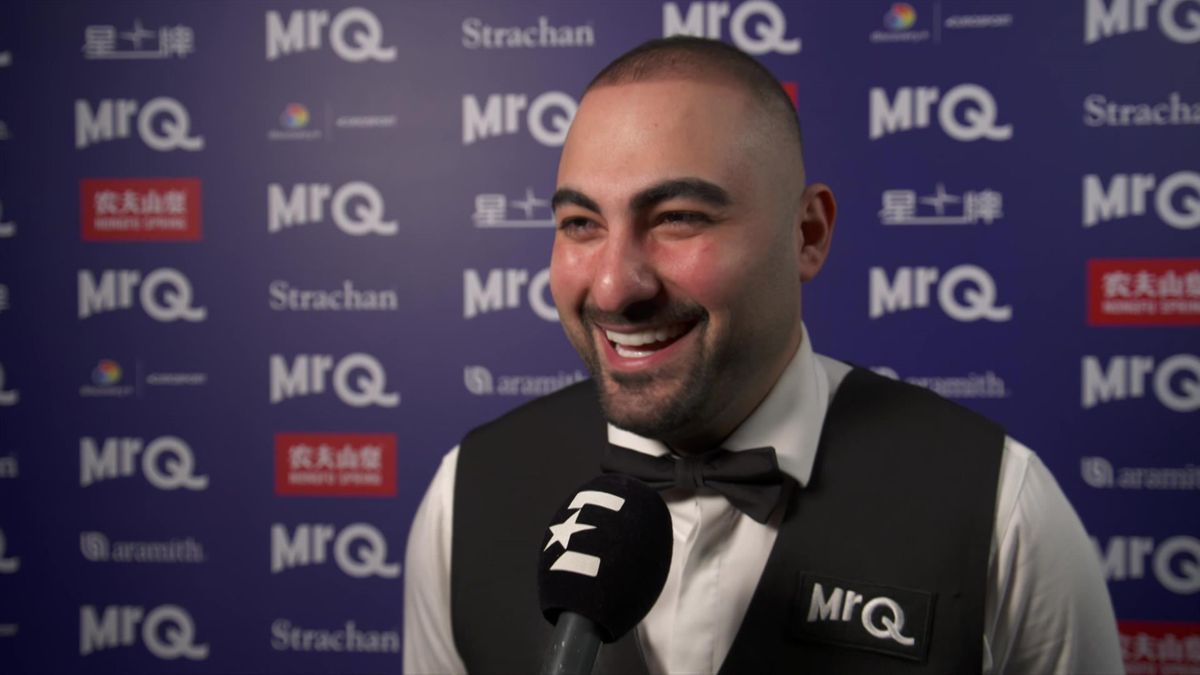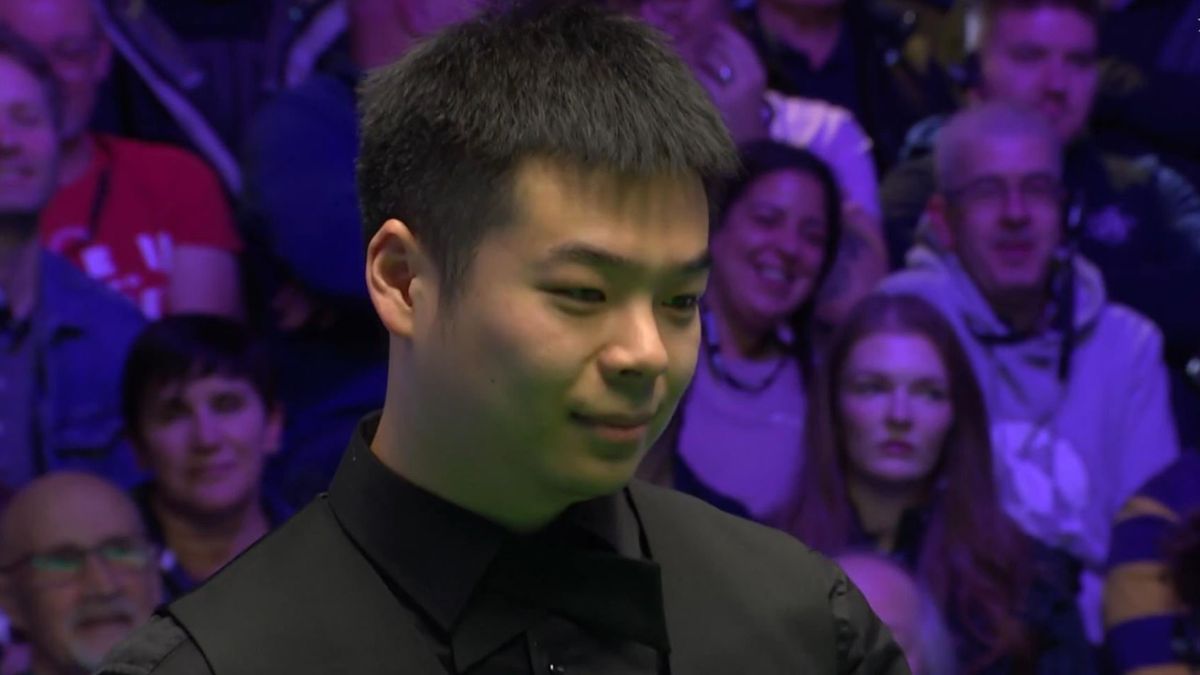Dave Hendon: Why big leads are never safe in snooker as shown at UK Championship – and the keys to comeback wins
Willie Thorne was playing the best snooker of his life. Against the great Steve Davis, no less, he was poised to take an unassailable grip on the 1985 UK Championship final. Leading 13-8, needing three more to win, he was clearing up in his easy, eye-catching way when, out of nowhere, he missed the final blue.
Davis won the frame and, back in the TV studio, former world champion John Spencer said: “We could still be talking about that blue at the end of the night.” In fact, we are still talking about it nearly 40 years on.
Thorne was beaten 16-14. It was set to be his biggest success but, fairly or not, is the moment for which he is most remembered. It was a very public reversal seared into the memories of a generation of snooker fans.
In the four decades since, many more players have failed to close out matches from healthy winning positions.
Why does this happen? Maybe there is something about snooker as a game which invites it. In football, if a team is 2-0 up with 10 minutes to go they can defend. In snooker, you still have to pot balls to get over the line. Going into your shell isn’t really an option.
But you also have to wait your turn. As well as a player has performed early in the match, if their opponent starts knocking them in they can only sit and watch.
Ding says he ‘couldn’t see the balls’ in comeback win over Allen
And trailing players are dangerous. At 5-1 down, Ford threw off the shackles and had a go, perhaps believing he could not win. No longer feeling the normal match pressure, he was suddenly a threat.
Meanwhile, Saengkham was rooted to his seat trying to quell the disquieting voices in his head warning of impending doom. This is one of snooker’s unique challenges, the fact that you can spend long periods sitting watching, thoughts swirling, unable to make any impact on proceedings.
Ronnie O’Sullivan once countered such a predicament when playing Mark Selby by counting the dots on a silver spoon. Anything to pass the time and not dwell on what was happening on the table. He ended the match with a maximum break in the decider.
The great man has not been immune to losing large leads himself. Paul Hunter beat him 10-9 from 7-2 down in the 2004 Masters final, but this was achieved with a barrage of single visit breaks, including three centuries.

‘We were sitting in the pub!’ – Vafaei ‘so glad’ to beat Murphy after fire alarm delay
A year later, at the Crucible, Peter Ebdon took the long and grinding road to victory, slowing down to a snail’s pace in overturning O’Sullivan’s 8-2 lead in their quarter-final. This time, Ronnie was not cool while sitting in the chair. Indeed, at one point he was standing on the chair.
The terrifying prospect of triumph disintegrating into disaster can especially take root in multi-session matches.
Davis raced into a 7-0 lead over Alex Higgins in the 1983 UK final. Higgins prevailed at the death, 16-15.
Just 18 months later, Davis led another Northern Irishman, Dennis Taylor, 8-0 in the World Championship final but famously lost 18-17 on the last black.
Mike Hallett held a 7-0 first session lead over Stephen Hendry in the final of the 1991 Masters but was beaten 9-8. A year later, Hendry recovered from 14-8 down to beat Jimmy White 18-14 in the World Championship final.
More recently, the mentally razor sharp John Higgins saw his 9-4 advantage over Neil Robertson overturned in the 2022 Tour Championship final. Robertson won 10-9, proving that even the game’s hardmen can be susceptible to what legendary commentator Clive Everton dubbed ‘Clincher’s Disease.’
This syndrome is best defined as a change in mental state when the winning line approaches. The enormity of suffering an unexpected defeat from a winning position negatively affects the usual processes required for actually winning.

Best safety play? Best temperament? O’Sullivan rates who has best snooker attributes
It has happened to pretty much every player at some time and the list goes on and on. And you could argue that in snooker there is no such thing as a winning position. Any player can win a sequence of frames in succession. It doesn’t always take a great number of mistakes from their opponent.
Ford has been working with a mind coach and confirmed after his match that attitude is key in such situations. “I had no chance of winning that match a few years ago,” he said. “I’d have already been out of the building. I’d have most likely smashed the pack and gone but I tried to stay as focused as I could, get a couple of frames back and see what happened.”
Of course, once the match goes into a decider, the pressure transfers. The player who has done all the hard work coming back has their first chance to win the match. For Clarke, it was about keeping the same mindset to the end.
“At 5-1 down I was looking forward to going home, but in the last two frames I didn’t think I was going to miss. Adrenaline was pumping through my body,” he said.

Pang makes ‘amazing fluke’ to seal frame against Trump
One of snooker’s great charms is its slow-burning drama. If a football team is 4-0 up after 80 minutes, they will win. Snooker does not acknowledge the clock. It isn’t over until someone has reached the set number of frames. There is no rule about what order to win them in.
The likes of Ford and Clarke are currently on a high after turning round unlikely deficits but know that, on another day, it could happen to them. In fact, it probably will.
This is one of snooker’s fascinating appeals: a sporting drama, yes, but a human one too. Courage and frailty hand-in-hand in the eternal battle on the 12 by six.
Read the full article Here


